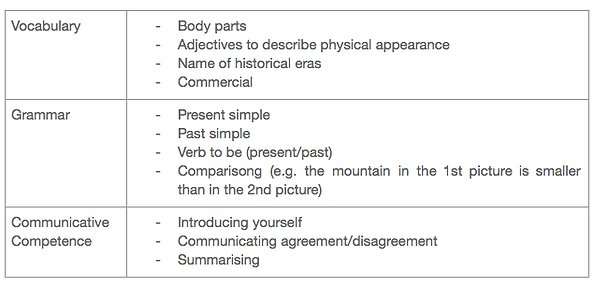SIX WONDERS
Oct 23, 20192 min read
OVERVIEW & PURPOSE
Throughout this telecollaborative project, we seek to cast doubt on children’s assumptions and prejudices towards the established ideas...

The competencies that we aim to cover throughout the implementation of this project belong to the so-called 21st century skills. The development of these competencies will enable our students not only to face the current social challenges but also to be ready for the unpredictable future. In other words, in a 21st century world, our students need to acquire 21st century skills. Thus, by the end of this project, our students will be able to:
Contribute creative solutions to a current social problem
Self-regulate their own learning
Make informed decisions based on the analysis of information
Establish intercultural and positive relationships that contribute to the learning of others
Communicate using a variety of media and technological tools
Two advertisements that promote body positivity (acceptance of self), as a result of cooperation between Catalan and Chinese partners.
By the end of this project, students will be able to:
Introduce themselves and engage in small-talk using English
Learn about the Asian and Western evolution of beauty canons by gathering digital information
Relate SESSION 4
Recognize subliminal messages in beauty advertisements by applying critical thinking
Create an advertisement that promotes acceptance of self and others with regard to body size and appearance
Throughout this project, students will be able to:
Raise awareness about the source of beliefs on body images
Foster a broader understanding of beauty as a social construction
Carry out tasks with autonomy and independence
Improve interpersonal skills by working in teams
Value and praise cultural differences in an atmosphere of mutual respect

Assessment is considered to be a big part of the learning. It will help students to check their understanding along the way and teachers to make decisions in regards to future interventions. In our project, we use formative assessment.
Without the regular use of formative assessment, or checks for understanding, how are we to know what each student needs to be successful in our classroom? (Dodge, 2009)
Steps to check for student understanding/learning
Self-assessment related to the objectives using rubrics Self-evaluations encourage students to monitor their own learning and learning needs and serve as an additional source of information on student learning.
Peer assessment → through google forms. After working in small groups.
Rubric → would be presented in each session



